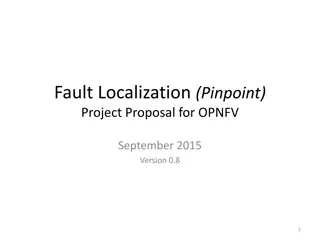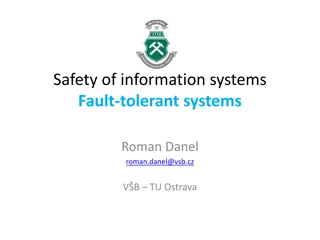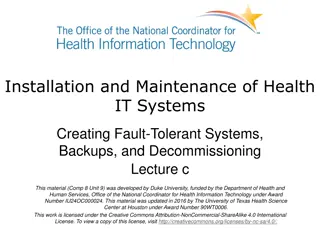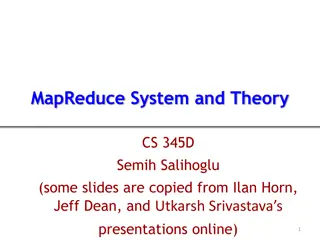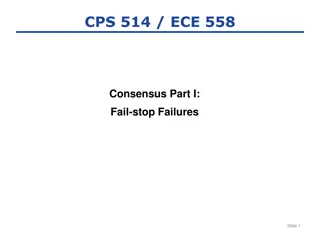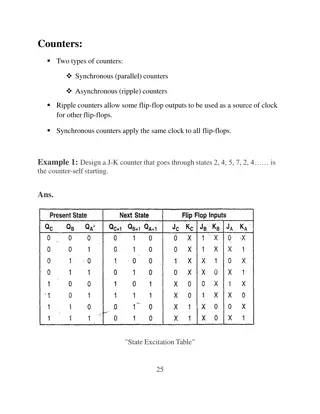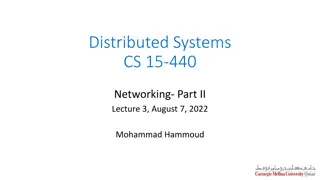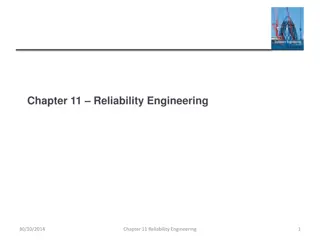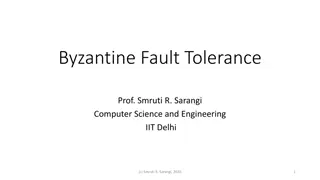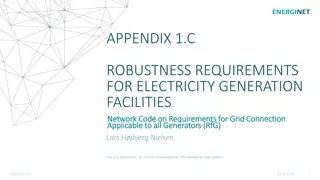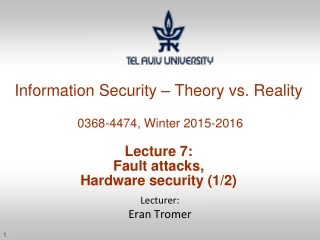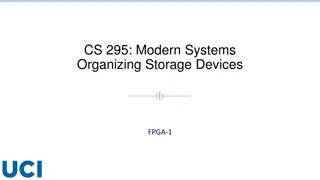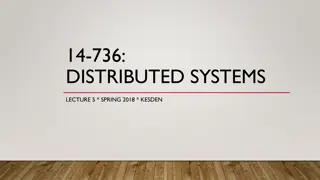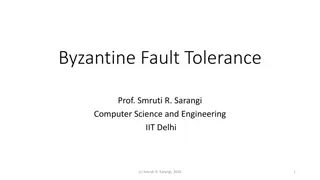PSync: A Partially Synchronous Language for Fault-tolerant Distributed Algorithms
PSync is a language designed by Cezara Drăgoi, Thomas A. Henzinger, and Damien Zufferey to simplify the implementation and reasoning of fault-tolerant distributed algorithms. It introduces a DSL with key elements like communication-closed rounds, an adversary environment model, and efficient runtime verification systems. The language aims to enhance fault tolerance and streamline algorithm development in distributed systems.
Download Presentation

Please find below an Image/Link to download the presentation.
The content on the website is provided AS IS for your information and personal use only. It may not be sold, licensed, or shared on other websites without obtaining consent from the author. Download presentation by click this link. If you encounter any issues during the download, it is possible that the publisher has removed the file from their server.
E N D
Presentation Transcript
PSync: A Partially Synchronous Language for Fault-tolerant Distributed Algorithms Cezara Dr goi, INRIA ENS CNRS Thomas A. Henzinger, IST Austria Damien Zufferey, MIT CSAIL POPL, 2016.1.21 1
Motivation Replication 2
Replication and Consistency X = -13 X = 42 Consensus X = 4 X = 42 X = 42 X = 42 3
The Paxos Algorithm [Lamport 98] Prepare Promise Accepted Accept Proposer Acceptor Acceptor Used at Google (Chubby), Microsoft (Autopilot), 4
Paxos in the Literature The part-time parliament [Lamport 98] Paxos made simple [Lamport 01] Paxos made live: An engineering perspective [Chandra et al. 07] In search of an understandable consensus algorithm [Ongaro and Ousterhout 14] Paxos made moderately complex [van Renesse and Altinbuken 15] Paxos made transparent [Cui et al. 15] ...Question: Could the same problem be simpler in different model ? 5
Contributions PSync:a DSL to simplify the implementation and reasoning about fault-tolerant algorithms. Main elements: Communication-closed rounds The environment as an adversary source code + specifications Simple round-based model runtime verifier Efficient runtime system Automated verification executable proof or counterexample 6
Asynchronous Programming Model and Faults Asynchrony Actor model, CSP, CCS, pi-calculus, Many PL based on or implementing these models Fault Waiting for a message Consensus is not solvable with asynchrony and faults [FLP 85]. 7
Faults as an adversarial Environment [Gafni 98] Abstraction: Execution: Heard-Of model [Charron-Bost & Schiper 09] ? ??(?) ? receives the message sent by ?. 8
Communication-closed Rounds [Elrad & Francez 82] Prepare Promise Accepted Accept Proposer Acceptor Acceptor A round is a logical unit of time, a scope for the messages, the granularity of messages reception. 9
PSync Program Structure Program RoundT 10
PSync Lockstep Semantics Init Round[0] Round[1] Round[ i mod r ] Update Send Env (HO) Challenge: Executing the lockstep semantics on a system which is not synchronous and provide liveness guarantees. 11
Example: Last Voting Algorithm Quorum Collect Candidate Accept Coordinator new Round[(Int,Time)]{ def send(): Map[ProcessID, (Int,Time)] = Map( coord -> (x, ts) ) def update(mailbox: Map[ProcessID, (Int,Time)]) { if (id == coord && mailbox.size > n/2) { vote = mailbox.maxBy(_._2._2)._2._1 // value with maximal ts commit = true } } } 12
Preserving Local Views Theorem Lockstep: Indistinguishable Runtime: Indistinguishability for every process p, the transitions and states of the projection of the traces on p agree up to finite stuttering. 13
Runtime Algorithm Send Receive Next round Catching up Accumulate Discard late messages TO Update Preserve liveness assuming partial synchrony [Dwork et al. 88] 14
From Indistinguishability to Refinement Init Init Client1 Client2 Decide Decide Init Client3 Decide Theorem: Observational refinement Clients Runtime(P) Clients Lockstep(P) 15
Benefits for Verification Reason about rounds in isolation. Lockstep semantics, no interleaving. Accept Promise Simple invariants that connects the round at the boundaries. No message in flight, only local state of the processes. Previous work on a logic verification of consensus algorithms [VMCAI 14] 16
Preserving Global Properties Theorem: Given a specification S closed under indistinguishability, if a PSync program P satisfies S then the asynchronous semantics of P refines S. Consensus is closed under indistinguishability. Verification engine for safety and liveness properties based on SMT. 17
Implementation https://github.com/dzufferey/psync Implemented in Scala, Apache 2.0 license 18
Do Algorithms use Rounds ? Algorithm LOC Use rounds Asynchronous One third rule 52 Last Voting (Paxos) 89 Flood min consensus 24 Ben-Or randomized consensus 56 K-set agreement 42 K-set agreement early stopping 33 Lattice agreement 34 ?-agreement 54 Two phases commit 53 Eager reliable broadcast 36 19
Code Size (Easy to Implement) Paxos in LOC Executable Verification PSync 89 Semi-automated DistAlgo 43 Distal 157 Overlog 107 TLA+ 53 Interactive IO Automata 142 Interactive EventML 1729 N Interactive Verdi (Raft) 520 Interactive Bloom 224 20
Performance and Verification Implementation Year Language Throughput (x 1000 req./s) Last Voting in PSync 2015 Scala 170 Egalitarian Paxos 2013 Go 450 Paxos in Distal 2013 Scala 150 JPaxos / SPaxos 2012 Java 75 / 300 Paxos for system builder 2008 C 40 Verification of # Invariants (LOC) # VCs Solving time in s. One third rule 4 (23) 27 5 Last Voting 8 (35) 45 16 21
Conclusion PSync uses a simple programming abstraction: the HO-model Lockstep semantics Communication-closed rounds Asynchrony and faults as an adversary that drops messages Automated verification becomes possible Runtime Asynchronous semantics indistinguishable from the lockstep semantics Can be implemented efficiently 22




